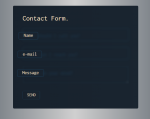Simple Calendar Using HTML JavaScript
This simple calendar is created using HTML, and JavaScript. It enables you to navigate the calendar for any month of any year. Use the drop-down menu to select what you want month to execute. Just download the source code and use it to your project. Try it yourself and enjoy coding. Hope this work will help you in your project.





